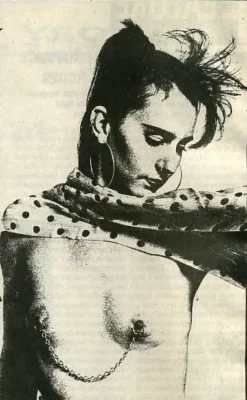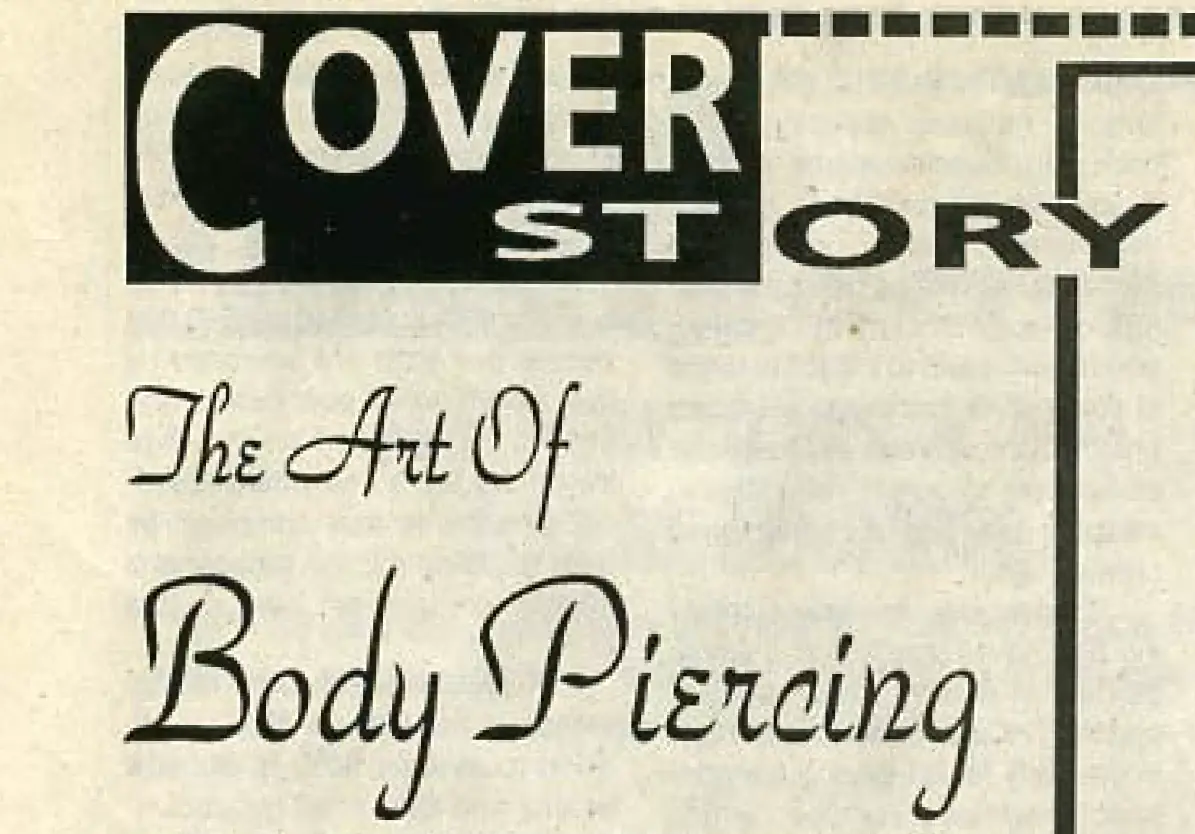The Art of Body Piercing
SLUGmag
 The first time I ever saw a person with a pierced nose I was repulsed, yet strangely fascinated. I wondered why anyone would want to do that to himself and why a person would inflict such pain on their body. As if often the case, fascination grew to obsession, and what started as a long string of piercing my own ears has turned into eleven ear piercings, a pierced nose and two pierced nipples. Now it’s my turn to hear, “Why do you do that to yourself?” and, “Did it hurt to get that done?” to which I calmly reply, “Of course.”
The first time I ever saw a person with a pierced nose I was repulsed, yet strangely fascinated. I wondered why anyone would want to do that to himself and why a person would inflict such pain on their body. As if often the case, fascination grew to obsession, and what started as a long string of piercing my own ears has turned into eleven ear piercings, a pierced nose and two pierced nipples. Now it’s my turn to hear, “Why do you do that to yourself?” and, “Did it hurt to get that done?” to which I calmly reply, “Of course.”
Body piercing has become more prevalent in the nineties, possibly fueled by the self-destructive tendencies of the punk era. But it has moved beyond the experience of “superiority through a lot of pain” and into the realm of body decoration and enhancement, both sexual and physical. An age-old process, seen in most all ancient cultures in one form or another. From primitive cultures such as African tribes who used body piercing as a display of social class, position in one’s tribe or family and a passage into adulthood by both sexes (each piercing distinguishing its meaning). Not only distinguishing rank, but just as much for the aesthetic values of decorating one’s body.
Various cultures have, and do practice piercing for as many different reasons as there are decorated people. Piercing can be a self-esteem booster. The pain is a necessary part of the process which is endured so that the final product can be enjoyed. There are companies that specialize in jewelry designed specifically for piercings of ears and other parts of the anatomy such as nipples and genitals. Gauntlet Inc. out of Santa Monica, California produces a “complete line of jewelry for every type of piercing,” with jewelry available in gold, silver and surgical stainless steel. They also create custom-made jewelry, tailored to the tastes of the individual. If you’re interested and brave enough to do your own piercing, or you don’t have access to professional piercing, Gauntlet also has supplies so you can safely pierce at home.
One of the foremost publications on piercing is PFIQ, or Piercing Fans International Quarterly, which form the basis for worldwide network of body piercers. Piercing fans from all over the world send in their personal experiences and photos which are then incorporated into the text of the magazine. With direction from Jim Ward, PFIQ is a great publication which promotes body piercing and gives the practice validation.
The process of piercing is fairly simple when done by a trained professional. The area to be pierced is first sterilized and then marked to ensure proper placement. Body piercings are done with a hollow-tip needle which allows the jewelry to be pulled through the hole easily and quickly. The needle is pushed through the skin while the jewelry is inserted into the hollow tip. Once this is done the needle is pulled through the skin, bringing the jewelry with it. Hoops are then secured and the area of piercing is further sterilized to aid in healing process. New piercings, with proper care, begin to heal quickly. The whole process takes place in a matter of minutes. It is quick and the pain lasts only a few seconds.
For best results, have your piercing done professionally. This cuts down considerably on the risk of infection, especially in areas that aren’t usually exposed to such practices. ASI Tattoo here in Salt Lake offers body piercing as one of their services and has jewelry designed specifically for body piercing.
Body piercing takes its participants into a new area of uniqueness. While many would look upon piercing as “just another fad” there seems to be more self expression involved, is often the piercings are in areas that can’t be seen by the general public and are personal trademark. There’s a certain sense of satisfaction involved in knowing of your piercings while others are completely oblivious to the fact.
For more from the SLUG Archives:
